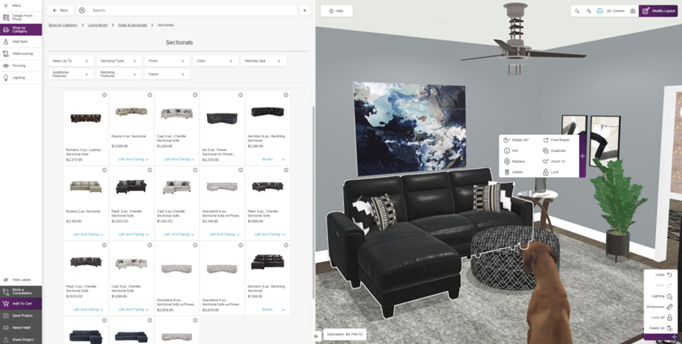
Customers are getting more and more picky when they shop online, where things are always changing. People don’t just want convenience; they want to be able to interact with, customize, and picture exactly what they’re getting. That’s where 3D tools, like the e-commerce product designer, are changing the way people shop online.
The Shift Toward Customization
Traditional product listings with static images and fixed descriptions are becoming outdated. Today’s consumers are drawn to interactive features that let them take control of their purchasing decisions. Whether it’s selecting colors, materials, or component combinations, customization is no longer a luxury—it’s a necessity for brands looking to stay competitive.
This shift is particularly significant in industries like furniture, fashion, automotive accessories, and tech gadgets, where buyers value visual accuracy and product individuality. The more personalized the experience, the more confident the customer feels in making a purchase.
What Is a 3D E-Commerce Product Configurator?
A 3D e-commerce product designer lets people change how a product looks and works in real time. Shoppers don’t have to pick from a fixed list of options; instead, they can rotate, zoom, and change product features on the screen. Want to see what a red couch with wooden legs looks like? Or have your name put on a pair of sneakers? With just a few clicks, a 3D designer lets you do this.
This tool connects the browsing experience you have online to the experience you have in a store. This makes e-commerce more immersive and helpful. It takes the guessing out of things, gets people involved, and most importantly, it builds trust between the customer and the brand.
Benefits for Online Retailers
1. Increased Conversion Rates
Interactive tools keep customers on your site longer and help them make confident decisions. When users can see the final product before purchasing, cart abandonment drops and sales increase.
2. Fewer Returns
Returns are a major challenge in e-commerce. Often, customers send items back because the product didn’t match their expectations. With a 3D configurator, buyers see exactly what they’re getting, reducing the likelihood of dissatisfaction.
3. Enhanced Customer Experience
3D configurators offer a fun and engaging shopping journey. They encourage exploration and experimentation, which makes shopping more enjoyable and memorable.
4. Scalable Product Customization
For businesses that offer a range of product options, a configurator simplifies management. Instead of creating endless SKUs for every possible variant, the configurator dynamically assembles the product based on real-time selections.
Use Cases Across Industries
- Fashion & Apparel: Let users personalize jackets, shoes, or hats with patterns, logos, or initials.
- Home & Furniture: Enable customers to try different upholstery, finishes, or layouts.
- Electronics: Customize hardware specs and aesthetic features on laptops or gaming gear.
- Automotive Accessories: Visualize car parts or upgrades directly on a 3D model.
No matter the niche, the demand for product personalization is increasing, and brands that adapt early stand to benefit the most.
Integration with Platforms Like Shopify
The great news is that these tools aren’t limited to big brands with massive tech budgets. One of the most popular e-commerce systems, Shopify, now lets you add 3D product configurators through apps and other tools. With minimal technical knowledge, store owners can add this advanced functionality and offer their customers a next-level shopping experience.
Final Thoughts
3D tools are not just a passing trend—they’re a powerful shift in how we sell and buy online. With an e-commerce product configurator, businesses can create visually rich, customizable shopping experiences that boost engagement and improve satisfaction. As online competition grows fiercer, adopting interactive technology isn’t just smart—it’s essential.
Brands that embrace 3D customization now will set the standard for tomorrow’s e-commerce experience.



